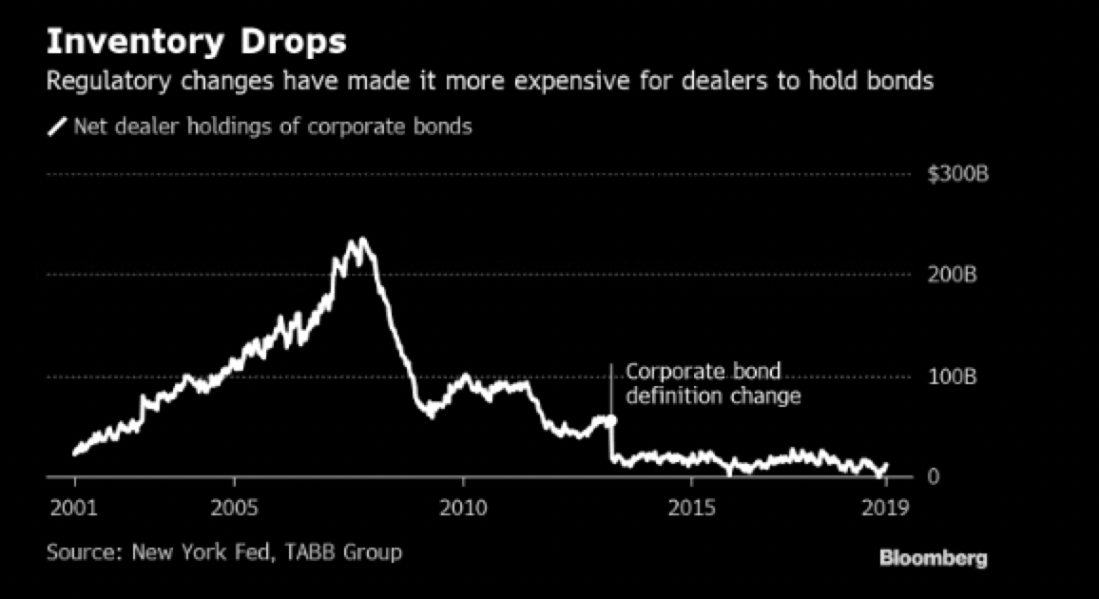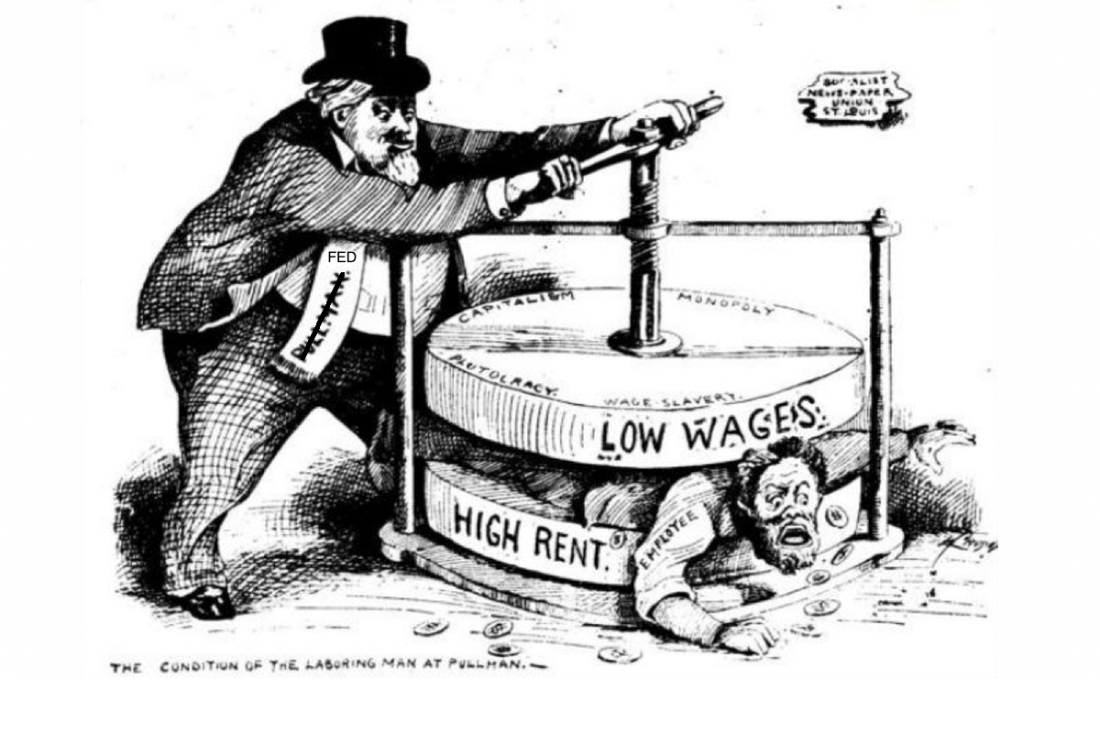The Dodd-Frank Wall Street legislation was signed into law back in 2010 by then President Obama. The legislation to limit banks from trading for their own accounts has generated its own conflict: what is the optimal level of transparency?
(Bloomberg) — U.S. market regulators are proposing to test whether keeping large corporate bond trades secret for two days will spur more buying and selling. A better tack might be to make it easier for dealers to hang onto more securities, some money managers believe.
In the decade since the 2008 financial crisis, dealers’ holdings of corporate bonds have plunged thanks to new rules that make it more expensive for banks to keep the securities and limit banks from trading for their own accounts. Brokers used to buy big blocks of bonds from investors and sell them over time, but are now more inclined to just link up buyers and sellers directly. Tweaking standards for reporting trades won’t make dealers more willing to hold onto securities, said Josh Lohmeier, head of U.S. investment-grade credit at Aviva Investors, which manages more than $420 billion.

“The potential changes are a nice excuse to reduce transparency, but internal capital controls post-crisis and charges for carrying inventory are probably a bigger impact to market liquidity,” Lohmeier said. “This is purely a benefit to the absolute largest asset managers and dealers, but is questionable how the rest of the market benefits.”
The end result may be that brokerages and the biggest investors boost their earnings without improving market liquidity, said Bill Zox, chief investment officer of fixed income at Diamond Hill Capital Management, which manages around $21 billion.
Financial Industry Regulatory Authority last week proposed a pilot program that would give traders 48 hours before having to reveal their so-called block trades to other investors. The proposal comes as trading volume in the corporate bond market hasn’t kept pace with issuance. There were about $37 billion of trades per day in the market in March, according to the Securities Industry and Financial Markets Association, a trade group. That’s about double the level of 2003. But outstanding corporate debt levels have about tripled, according to Bloomberg Barclays indexes.
Money managers and dealers have proposed a wide array of fixes. BlackRock Inc., for example, has suggested standardizing corporate bonds and increasing trading venues. The Financial Industry Regulatory Authority (FNRA) proposed a pilot program last week that would give dealers 48 hours before having to reveal their so-called block trades to the market.
Big investment firms including BlackRock and Pacific Investment Management Co. have lobbied for the delay, arguing that the current rules, which require large transactions be reported within 15 minutes, can make it harder to clear trades because market participants know exactly what was bought and at what price.
Shock Absorbers
Limits on banks’ trading were designed to make them safer institutions than they were a decade ago. But traders have argued that it can be difficult to execute large block trades in less-liquid portions of the market.By one measure from the New York Federal Reserve, primary dealers’ holdings of corporate bonds have plunged to around $10 billion today from more than $200 billion in 2007.
Part of those declines may be overstated, consulting firm Tabb Group said in a report last year, because of a change in the way the Fed defined the debt in 2013 to exclude mortgage-backed securities without government backing. Still, the firm estimated that dealer inventories dropped somewhere between 35 and 50 percent between 2007 and 2014.
Why Corporate Bond Liquidity Might Not Be as Bad as You Fear
Dealers historically served as shock absorbers in markets, buying securities from money managers and then patiently waiting until they could offload the bonds. That’s harder now, said Jason Brady, president and CEO of Thornburg Investment Management, which manages $44 billion.
“It’s always been the case in bonds that nobody wants to buy exactly what the other person wants to sell at the exact same time,” Brady said. “That’s been the role of the broker dealer, and they can’t really play that role anymore.”
Finra introduced the Trade Reporting and Compliance Engine, better known as Trace, in 2002 in an effort to increase transparency in the corporate bond market, where the bulk to transactions still take place over the phone between buyers and sellers. Many junk bond dealers believe the reporting requirements have hurt market liquidity, said Ken Monaghan, co-director of high yield at Amundi Pioneer.
“How do you improve liquidity? Almost uniformly Trace has been pointed to as one of the major obstacles,” Monaghan said.
The idea for the pilot was suggested by a group of industry executives that advises the SEC. The Securities Industry and Financial Markets Association, Wall Street’s biggest trade group, supports for the proposed test as do JPMorgan Chase & Co. and Eaton Vance, according to Finra.
One the other hand, two market makers for exchange-traded funds have expressed concern that the changes would reduce price transparency, Finra said. Even one of the biggest money managers is opposed to the idea.
“Our belief is that the reporting rules today work for the market,” said Chris Alwine, head of global credit at Vanguard Group, which manages more than $5 trillion of assets. “We’re not in favor of the proposal. It works against electronic trading, the evolution of the markets because you’re withholding information from market participants.”
I agree with Chris Alwine. The 48 hour rule goes against market evolution and tries to return to a gilded age of securities.
